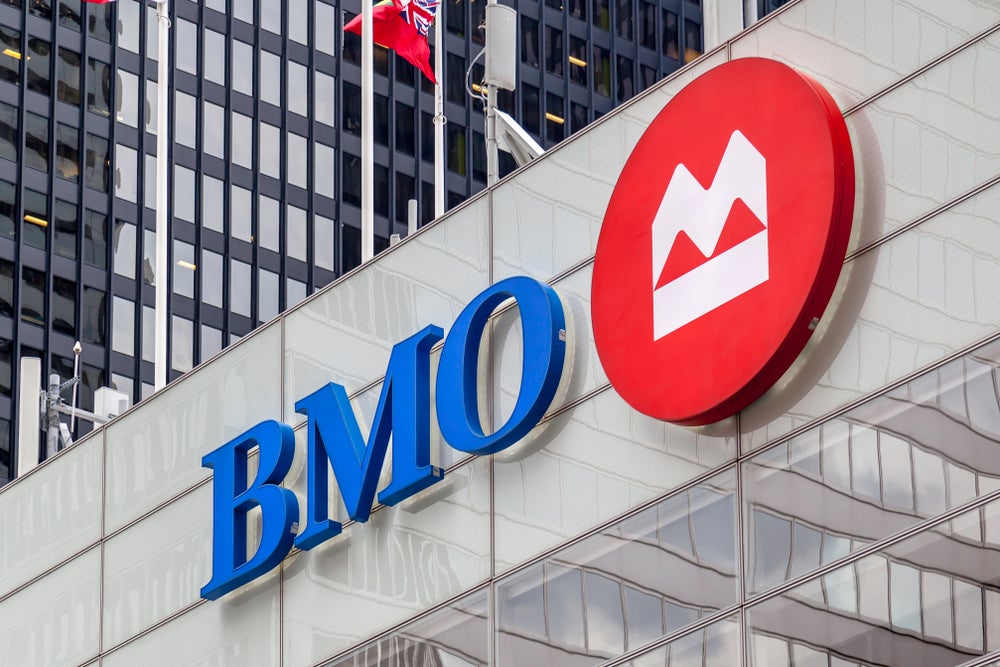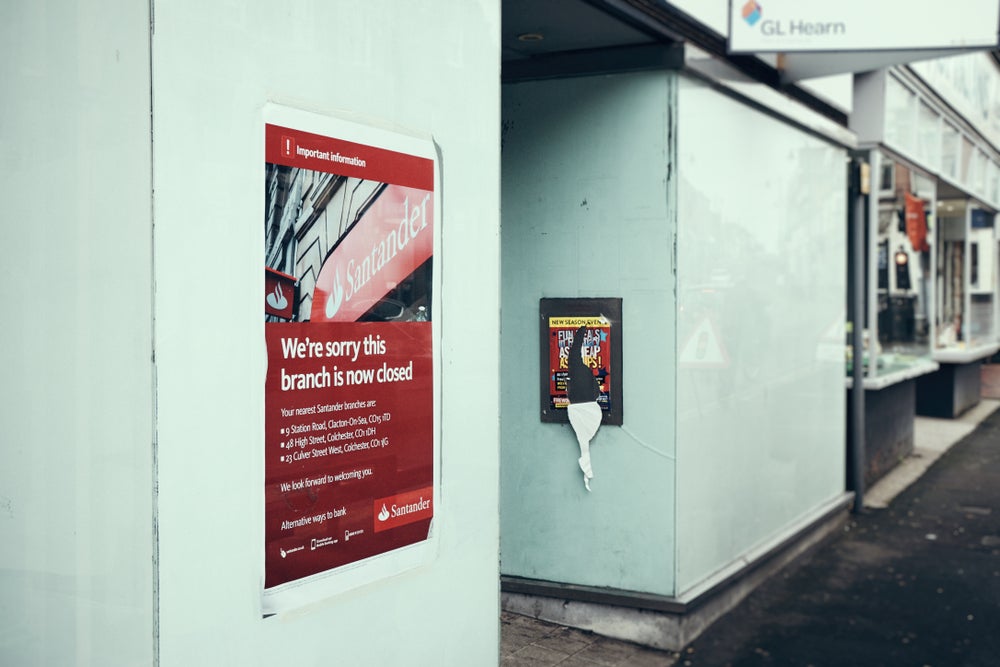self-service channels, branches remain at the heart of the vast
majority of the retail banking industry – but their format and
focus is changing, from consumer finance shops to megabranches. A
report from VRL KnowledgeBank* looks at key developments in
branch-based banking.
Today, the branch is usually supplemented by other types of
delivery channel; however, it has yet to be supplanted as the most
effective channel through which to create and cultivate profitable
relationships. The principal objectives of any delivery channel,
and in particular the branch, are:
• to project and represent the brand (or sub-brand);
• to protect and develop the existing custo-mer base;
• to acquire profitable new customers; and
• to provide a service that is a critical requirement of its
location.
How well do you really know your competitors?
Access the most comprehensive Company Profiles on the market, powered by GlobalData. Save hours of research. Gain competitive edge.

Thank you!
Your download email will arrive shortly
Not ready to buy yet? Download a free sample
We are confident about the unique quality of our Company Profiles. However, we want you to make the most beneficial decision for your business, so we offer a free sample that you can download by submitting the below form
By GlobalDataThe encouraging outcome from the research associated with this
report can be summarised in two statements. In the first instance,
there is now widespread evidence of a greater focus on all aspects
of branch strategy – and not just the pursuit of the ’branch
(format) of the future’. There is an increasingly widespread
appreciation that many other aspects of branch operations must
receive close attention, not the least of which is how retail bank
staff deal with their customers.
The second, equally important, statement is that available evidence
demonstrates how this wider, more intense focus on all aspects of
branch strategy is yielding both higher levels of customer
satisfaction and network profitability.
Costly branch operations
A review of retail banking history over the last two decades
clearly reflects the hope that the new generation of delivery
channels would enable bankers to significantly downsize, or
completely close, their costly branch operations.
Nevertheless, there have remained a number of inconvenient truisms
that have thwarted the proponents of this new-generation banking.
The first of these is the continuing preference of the consumer for
the personal touch, something which continues to be demonstrated in
recent years. For example, the number of branches in South Korea –
whose consumers are among the world’s most vigorous users of the
new-generation banking channels – actually increased by over 130 in
2007 from around 4,400 at the previous year end, according to the
Financial Supervisory Service.
The second issue is demonstrated by a survey published by Mercer,
Oliver Wyman in the US among North American and European banks as
early as 1998. Its research was to show that the introduction of
new channels was not seen by customers as an alternative to the
service provided by their branch. Customers regarded the new
channels as additional means of accessing and using their accounts,
and a further set of transactions was generated.
The effect was to increase the overall delivery channel costs of 87
percent of the institutions that responded to the survey by as much
as an estimated average of 25 percent.
The third factor that emerged concerned the issue of costs and also
that of income. While new channels handle transactions at much
lower costs, their ability to acquire new business and maximise the
income potential of the customer relationship has remained
limited.
The development of new ATM marketing techniques, linked to customer
relationship management (CRM) systems and offering personalised
transactions, is an example of increasing self-service
capabilities. The adoption of online banking grows apace, and the
internet channel may well now be disintermediating the call centre.
Both of these latter delivery channels, and the rising generation
of mobiles, also have the ability to handle monetary transactions
and generate income – again, at advantageous cost levels.
Mobile messaging is one example of the new capabilities that they
bring with them. However, much remains to be achieved in developing
these channels before their relationship and income-development
capabilities reach that of well-trained branch staff leveraging the
footfall of the branch.
And the ability to offer the means to replace the branch teller
still seems some way off.

The predominant delivery component
While the role of new channels is developing and evolving, the
branch remains the predominant component within the delivery mix of
retail bankers for the foreseeable future. Case studies and papers
illustrate how that central truth is not only widely recognised,
but forms the platform to justify a widening range of development
initiatives in many retail branch networks across the world.
Branches play a vital role in branding, for instance. The
organisational values inherent within the bank’s brand offer the
best route through which to achieve differentiation in the banking
sector. Interpreting and communicating these values through the
branch network requires a multi-faceted programme. The corporate
image, staff behaviour, service levels and branch communications
strategy all play a role in projecting and representing the
organisational brand values.
The all-important issue of branch communication has three
distinctive components. The first is the signage (developed to
corporate design standards) that tells the customers about the
facilities within the branch and how to use them.
The next, and historically the most significant, component of
branch communications has been the various types of merchandising
that tell the customers about the products and services that are
available.
The third element within the package should be the corporate
messages that tell the customers about the organisation and its
brand values. In practice, this component of the communications mix
is rarely included at branch level, or is only deployed on a
minimal basis.
And yet the projection of an organisation’s brand values is
increasingly the most effective way for a bank to be able to
achieve some measure of differentiation in a crowded market.
This latter aspect of branch-based communications is extremely
important and requires significantly greater attention from most
retail banks.
The comprehensive programme of work carried out in this area by
Credit Suisse, for example, in pursuit of branch excellence has
also addressed the issue of experiencing the brand at the branch
from the perspective of the human senses. The bank has developed
tactics to ensure that each human sense, including smell, receives
the message that the bank would wish to be associated with its
brand.
There is also evidence of the increasing concerns of retail bankers
to improve the levels of service that they offer through their
branch networks. Service strategy, staff competences and process
effectiveness combine to make a major contribution to both the
customer experience and the perception of the bank that they
develop.
The Net Promoter Score
The approach taken by TD Canada Trust (TD) is just one of many
different strategies adopted by the banks discussed in this report.
The objective of TD is to differentiate itself through taking
service delivery levels beyond the merely ’good’. The bank is also
one of an increasing number that are using the metrics associated
with the ’Net Promoter Score’ to evaluate their service levels and
create a basis through which to target and pursue
improvements.
The concept of the Net Promoter Score has been developed and
introduced by Fred Reichheld, director emeritus at Bain and Company
in the US. The technique requires that companies identify two
distinctive groups of customers – those who are promoters and those
who are detractors.
The former group comprises those who will talk openly and
enthusiastically about a company, while the latter comprises
dissatisfied customers whose comments will be detrimental to the
reputation of the organisation. The Net Promoter Score is simply
expressed as the percentage of promoters minus the percentage of
detractors.
Case study – Banca Nazionale del
Lavoro
Founded in 1913, BNL now operates a network of around 700 retail
branches and almost 1,300 ATMs across Italy. The group, wholly
owned by France’s BNP Paribas, has 2.5 million personal customers
and 100,000 small business clients.
BNP Paribas has significant ambitions for its acquisition, with
particular emphasis on a programme of new and upgraded branches.
The objective was to design a branch that could be characterised as
having an ’Italian heart’ with a ’European perspective’, and the
new retail design strategy was entitled ’The Forum of Banking’.
Building on the concept of a traditional Italian piazza, the new
branch interior was designed to incorporate a central forum around
which the different banking modules would be based.
In keeping with the national provenance, each of the dedicated
zones was given an Italian name and sympathetic look and
feel.
• the Gate: a point of entry and security;
• the Piazza: a public gathering area in the centre of a town
or city;
• the Market: a place to transact business;
• the Colonnade: a column-lined arcade; and
• the Spa: a restful place for treatment and
relationships.
The plan also incorporates three principal zones that are termed
according to the objectives of the bank and the customer grouping
most likely to use the area: Zone 1: Manage – this is designed for
mass-market customers, minimising their impact on the main space in
the branch; Zone 2: Engage – mass-affluent customers will be
allowed the full use of this area of the branch while the bank
seeks to engage their interest; and Zone 3: Grow – this area is
reserved for discussions with more affluent clients and SME
customers whose growth will represent the future of the bank.
The result of the redesign programme has been a powerful
combination of European modernity and Italian flair: one that is in
keeping with the changes in national prosperity and the increasing
ability of Italian workers to make lifestyle rather than economic
choices. It is an Italian retail success story.
The final challenge of the project was to achieve a fast and
cost-effective roll-out of the new concept across the BNL network.
It was not practical or time-efficient to adapt each branch
individually. So a unique ’kit of parts’ – an inventory of standard
fixtures and fittings customised to the brand – was used to provide
an effective roll-out solution. The kit of parts application
enabled each of the new branches to be rapidly refitted to high
standards at a minimal cost of less than €50,000 per site.
*The above is a very brief extract from a new report published
by VRL KnowledgeBank called The Branch Is Back – Global Case
Studies in 21st Century Banking Success. Written by David
Cavell, a respected industry consultant and one of the judges at
the recent RBI industry awards, the report looks at the key trends
in branch design and the role of the branch in bank distribution,
and uses a number of case studies to illustrate all of its
conclusions. For more information, contact Shouvik Sen on +44 (0)
20 7563 5615 or at shouvik.sen@vrlknowledgebank.com







